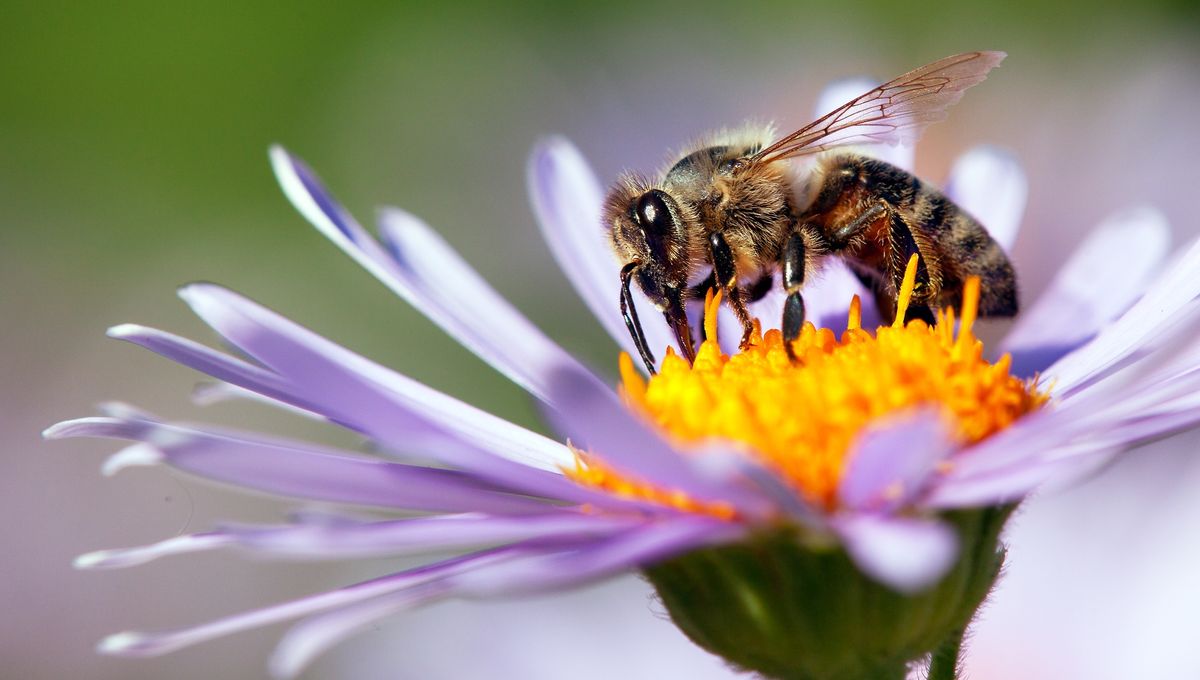
The humble honeybee could become the newest recruit in the fight against a growing global health threat. In a new study, researchers enlisted honeybees, using them to keep track of antimicrobial resistance (AMR) in the environment.
AMR is the result of bacteria, viruses, and other pathogens evolving to the point where they are no longer affected by treatment, such as with antibiotics. This can make infections far more difficult – or even impossible – to treat, leading the World Health Organization to declare it as one of the top 10 global public health threats facing humanity.
To try and tackle the growing problem of AMR, scientists can keep track of the spread of resistant microbes in the environment, although few tools exist to do so. Researchers at Macquarie University turned to a fuzzy friend, the European honeybee, to lend a hand.
“Bees interact with human environments, so they are a really good indicator of pollution that may present of risk of harm to humans,” said one of the study authors, Kara Fry, in a statement.
“Bees only live for about four weeks, so whatever you’re seeing in a bee is something that is in the environment right now.”
The team examined honeybees from hives across a number of settings across the Greater Sydney area, including parkland and industrial areas, but also densely populated residential zones. This was to get an idea of the level of environmental AMR in Greater Sydney as a whole but also to determine if the type of environment affected its prevalence.
The researchers took eight bees per hive on their return flight to each hive and then sampled what was in their digestive tracts for DNA analysis.
What they were looking for were class 1 integrons; these genetic elements are key drivers of AMR due to their ability to easily capture resistance genes and transfer them between microbial organisms.
“As humans have released their own bacteria into the environment, Class 1 integrons have spread into other natural systems. You can now find them on every continent, even Antarctica. You can find them in really diverse spaces,” said Fry, another of the study’s authors.
The results revealed that class 1 integrons were pervasive across the areas tested, having been found in 52 percent of the honeybees. The team also assessed for three other genetic elements associated with AMR and found that 83 percent of the honeybees were positive for at least one or more.
What took the researchers by surprise, however, was in which areas the most class 1 integrons could be found. Expecting it to be in the most densely populated zones, they instead found that the highest concentrations were around bodies of water.
Fry provided a possible explanation for this: “We suspect the presence of local waterbodies that collect run-off is a critical source of AMR contamination.”
“Everything from the catchment drains down, then it stays in that system.”
At the end of the study, the team of scientists concluded that their results provided sufficient evidence that honeybees make effective tools for monitoring AMR. They suggest that the next step is to further explore the biomonitoring capacity of bees, testing what other environmental contaminants they can detect.
The study is published in the journal Environmental Science and Technology.
Source Link: Bees Can Keep Track of Neighborhood Antimicrobial Resistance